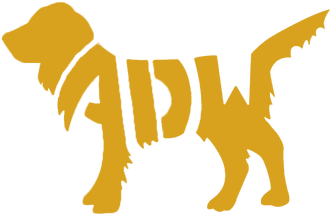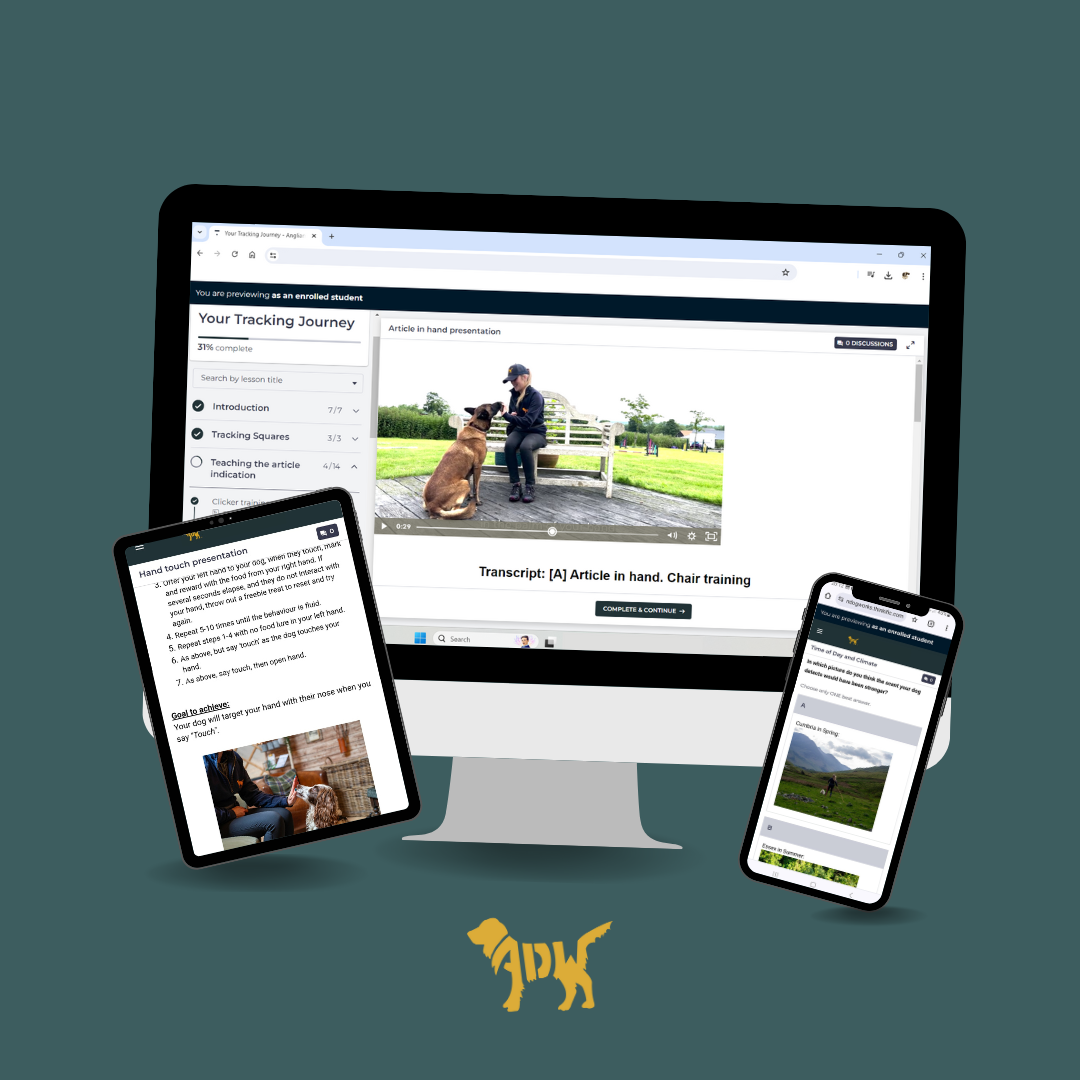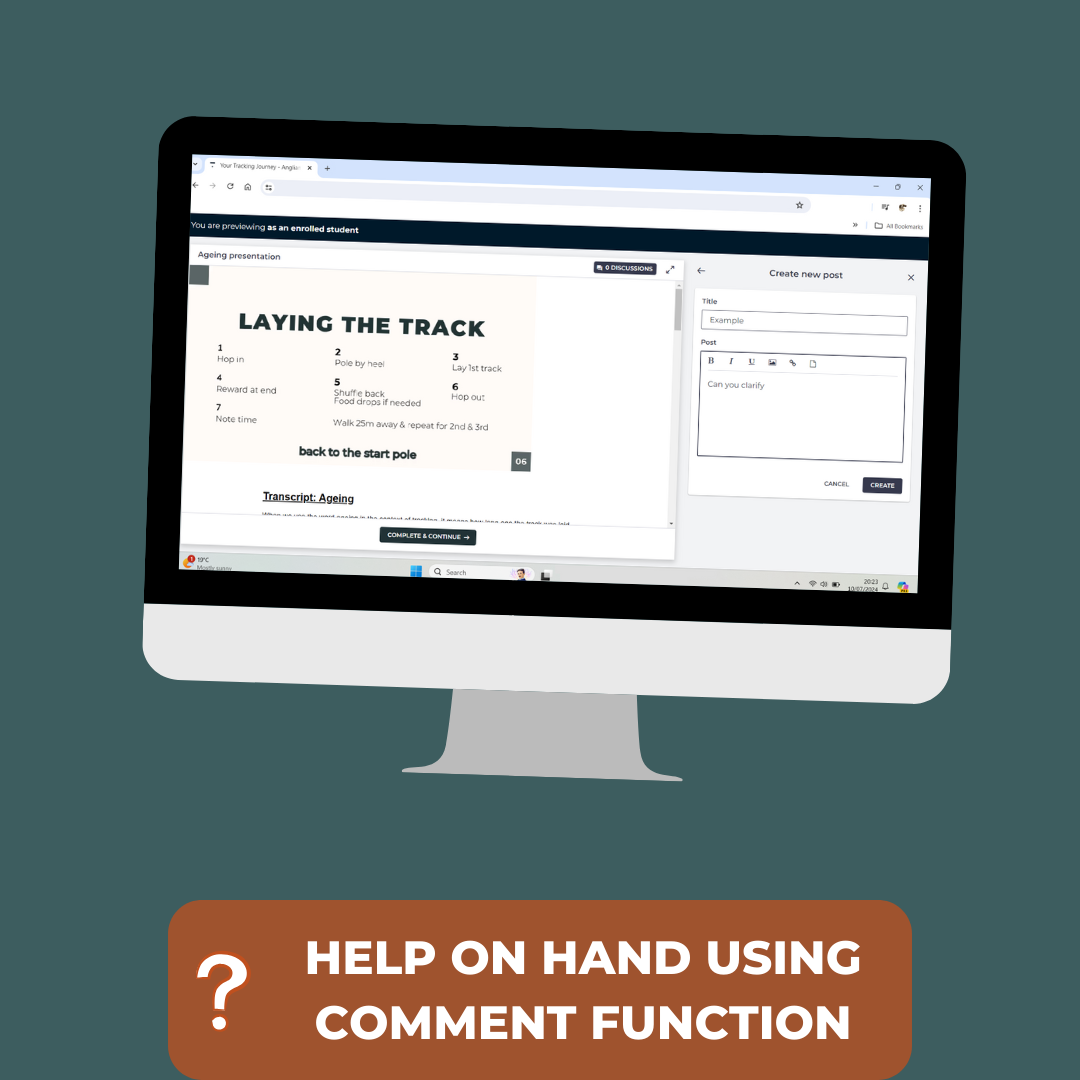

Tracking ticks all the boxes
If you asked your dog what he wanted to do today, the answer would be tracking!
Quite simply because it ticks so many boxes: mental enrichment, physical outlet, and time with you to name a few.
While humans experience the world visually, dogs are olfactory creatures and their smell is an important sense to them. The part of a dogs’ brain that processes scents detected by their noses is approximately 40 times larger than in humans, relative to total brain size.
Therefore, engaging this part of the dogs’ brain for tracking is both mentally and physically stimulating!
The activity is suitable for any age or breed of dog. Once you have a strong relationship with your dog, you can start with a 12-week-old puppy, right up to a dog in their senior years.
Being introduced to different environments and articles to track means it's a great way to enrich and build confidence in mobile individuals such as puppies, rescues, frustrated, anxious or reactive dogs by allowing them to gather information about the world around them.
Additionally, handlers experience benefits too. This type of training gives you the opportunity to slow down, be present and enjoy some quality time outdoors with your dog as you are mindful of environmental factors such as the wind, weather and site of the tracks you will be laying.
So, what is tracking training?
When you train a dog to track, you are teaching them to follow a unique ground scent of the track you introduce them to when you say “Seek on”.
This scent will have been left by a target, which is often human footsteps but could be an animal.
This skill can be applied to working trial search squares or even search and rescue scenarios such as Bringsel style training.
Tracking contrasts to trailing where the dog uses air scenting more than a ground track, or detection where a dog searches an area or people for a target scent.
Your Tracking Journey
- The programme is designed to be an accelerated start to your tracking journey and teaches the three core skills of tracking, article work and indication separately, making sure each is well understood, before combining them.
- The aim is to share as much information in these progressive steps as possible, then it’s over to you to put these stages into place at an appropriate pace for your dog in between lessons with goals to work on independently.
11 weeks of content to work at your own pace.
- All participants will have lifetime access to the self-study material in the online course modules with 3 implementation weeks to give you a window to practise what you’ve learnt.
- You will find troubleshooting and tips throughout the programme, such as the effect ageing a track and line handling has on performance.
- Professional help is always to hand should you need it using our comment function, email, or at training.
- Checkpoints are in place to make sure you progress at the rate right for you and your dog.
- Videos, photos and detailed explanations are there to help you understand the concepts.
By the end of the course, you won't be left to stop your training journey and wait for a trainer-led session to continue with your tracking. While I will offer drop-in sessions that you may choose to participate in, you will be armed with all the skills that you need to go and lay your own tracks. You will know how to progress your skills in a number of ways: longer tracks, different terrains and articles. You will understand how to assess what went well and decide what elements you will work on next.
For all orders exceeding a value of 100USD shipping is offered for free.
Returns will be accepted for up to 10 days of Customer’s receipt or tracking number on unworn items. You, as a Customer, are obliged to inform us via email before you return the item.
Otherwise, standard shipping charges apply. Check out our delivery Terms & Conditions for more details.
Returns will be accepted for up to 10 days of Customer’s receipt or tracking number on unworn items. You, as a Customer, are obliged to inform us via email before you return the item, only in the case of:
– Received the wrong item.
– Item arrived not as expected (ie. damaged packaging).
– Item had defects.
– Over delivery time.
– The shipper does not allow the goods to be inspected before payment.
The returned product(s) must be in the original packaging, safety wrapped, undamaged and unworn. This means that the item(s) must be safely packed in a carton box for protection during transport, possibly the same carton used to ship to you as a customer.
Recently Viewed
Don't forget! The products that you viewed. Add it to cart now.
Recommended for You
Find more solutions that might interest you




